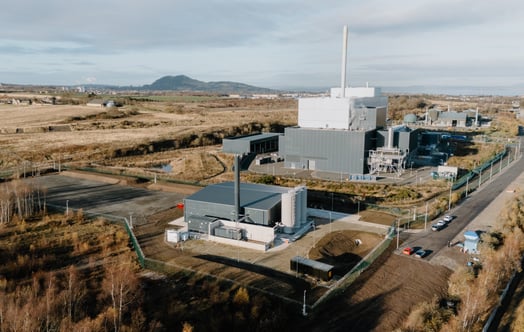
In under four years all new homes in Scotland must have low carbon heating. This means that developers need gas alternatives lined up now to stay on the right side of legislation and to secure planning consent in future.
While relatively new to the UK, heat networks are commonplace in many parts of Europe and are key for Scotland’s transition to low carbon. Heat networks will play an important role in Edinburgh and Glasgow in particular, as they can be the best value in urban areas. The same core piping and low carbon heat sources can be used to serve many homes and businesses in these denser areas, reducing the costs of implementing low carbon alternatives to gas heating.
Treat heat like another utility
Although a relatively new approach for developers in Scotland, large-scale heat networks are not far removed from how we already think about utilities such as electricity in new builds. From a development perspective a heat network functions much like any other utility, but instead of pipes and cables supplying electricity or gas to a property, they bring hot water. Whether heat is extracted from the air or ground via heat pumps, or generated using electricity from wind power, the core principles are the same. Hot water is generated in an Energy Centre and then distributed via an insulated pipe network and delivered into homes and businesses via a Heat Interface Unit (HIU). The heating system inside the property is then controlled and managed by the occupier in the normal way.
Video player requires marketing cookies.
To view this content please click here to allow marketing cookies.
What is district heating?
How does district heating work? How can it help to reduce carbon emissions? District heating and heat networks can reduce our reliance on fossil fuels, clean up the air in our cities and support local economies.
Plan ahead with experts to save time and money
Just like supplying a new build development with water and electricity, having a plan for your heat network from the outset vastly reduces the need to change plans further down the line. This is particularly important as there are important differences when it comes to heat. Experienced engineers can help to outline where heat sources need to be and where pipes will go to save costs as well as headaches. For example, concepts such as trench distancing need to be considered early on. This is where hot water is kept at a minimum distance from cooler water as both travel around buildings, to avoid any influence on the temperature. It is important to bring in partners with experience when laying heat networks, to ensure everything works as planned once in use.
Strike a balance between expertise and control
While installing a heat network might first appear daunting for developers who have always worked with gas boilers, the change doesn’t need to threaten development schedules and build costs.
Flexibility and control are both fundamental to keeping to time and budget on site and, in the case of heat networks, the former is best ensured by having the right expertise and experience to hand when you need it. This means striking a balance between reaching out to those that have installed heat networks before and drawing on their expertise, while keeping as much control over construction as necessary. For example, at Vattenfall, we work with different developers in different ways to suit their needs. We’ll work directly with a developer’s chosen contractor to ensure the network can be developed to time, whilst also meeting quality standards – such as the CIBSE (Chartered Institution of Building Services Engineers) code of practice – or can take control of the build of a network in a way that fits an existing plan. What is central to meeting build schedules is that you pick a partner that works around you.
To discover more about how heat networks can help you future-proof your build, read more here, and get in touch if you would like to find out more about we can help you transition to low carbon heating.




